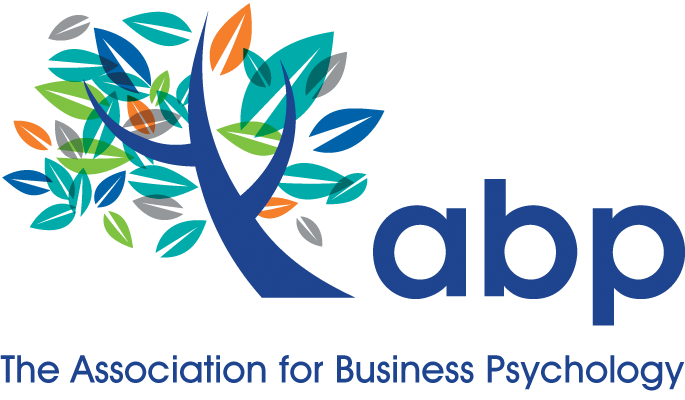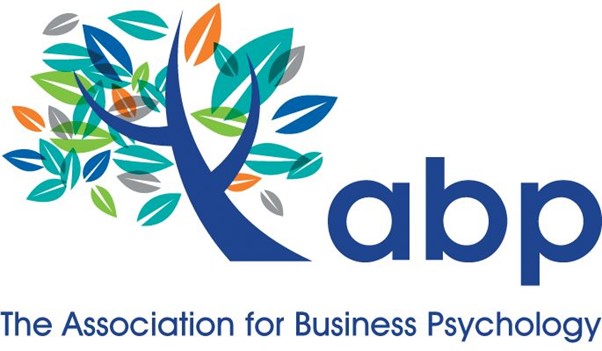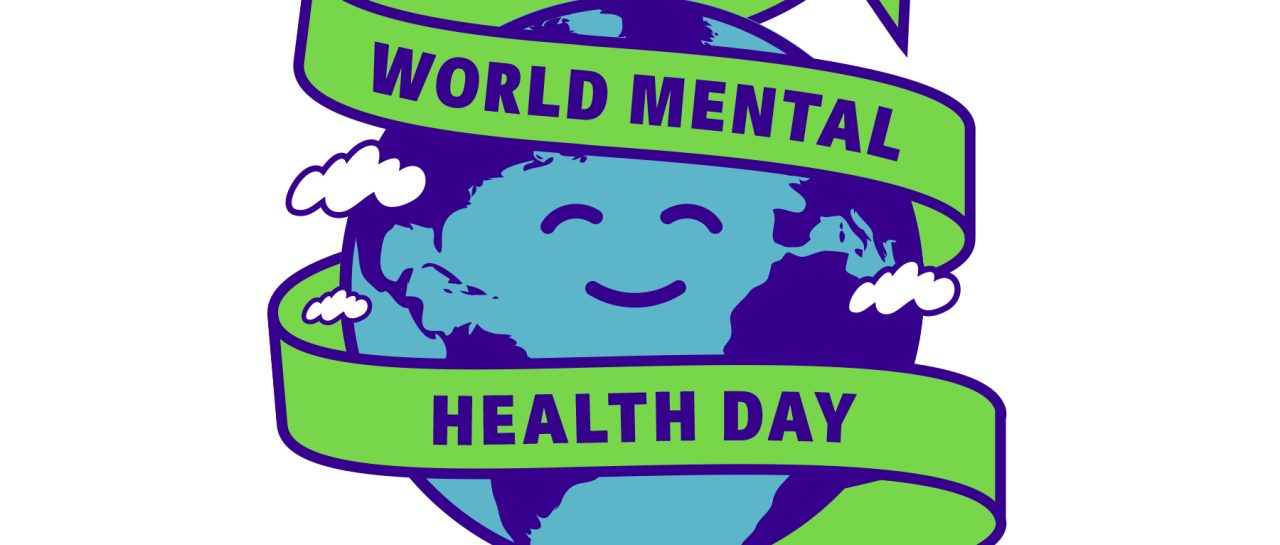After delivering a very well-received development programme for emerging leaders, we reflected on the question: What was the game-changer with this group of people? As we often find, the shift in people was felt when we were encouraging participants to look more deeply at the…

Article based on webinar delivered October 2024
Author: Dr Rainer Kurz, Chief Psychologist, HUCAMA Analytics Ltd
My 2024 Conference season was intensive preparing a dozen papers across 5 events including one at the ABP Conference in Denham. The enthusiastic folks at the ABP encouraged us to submit to the 10th ABP Awards and our submission made us a finalist – hope things are going right on the night 27th November 2024!
I was kindly invited to present a lunchtime session which I delivered on 18th October 2024 providing a synopsis of our presentations across SIOP, ITC, BPS DOP and ICP conferences in Chicago, Granada, Sheffield and Prague respectively.
The link to my webinar recording is here https://youtu.be/jSJIJaHB89U .
I discussed the evolving landscape of occupational testing and business psychology, focusing on key industry issues that have been shaping these fields. I explored four pivotal questions:
- From Big 5 personality factors to Great 8 Success Factors: How can the latest advances in personality assessment theory be harnessed to deliver nuanced assessment solutions for the employee life cycle? I delved into how advances in assessment technologies can drive better understanding of individuals, groups and organisations.
- Integrating assessment of potential and performance: What synergies can be created by combining the assessment of personality and competency? I discussed how Response Style (self-efficacy beliefs in self-reports and halo/horn effects in 360 ratings) can be eliminated and diverse assessment modalities be put on a common metric.
- Understanding the drivers of job satisfaction and effectiveness: How can business psychology support an evidence-based approach to wellbeing and performance management? I l shared a short Job Success measure and how it relates to 8 underpinning factors.
- Emotional Intelligence and Learning Agility: What are the issues with ‘trendy’ assessment approaches today? I explored emotional and operational aspects underpinning work agility.
By addressing these questions, I provided an overview of classic conundrums in assessment psychology, and outlined solutions to these vexing problems that have been perplexing many in HR and business psychology,
From Big 5 personality factors to Great 8 Success Factors
Since joining SHL in 1990 as a Trainee Consultant I have been working towards a universal model of success at work. Following a widely cited book chapter (Kurz & Bartram, 2002) that outlined the World of Work (WoW) model and the Great 8 Competencies, we arrived three decades later at the Great 8 Success Factors.

I had the good fortune to get involved in a meta-analysis (Robertson & Kinder, 1993) when the Big 5 model consensus started to emerge. Reflecting on the research in the light of the OCEAN mnemonic, Openness, Conscientiousness, Extraversion, Agreeableness and Neuroticism did their job – predicting hypothesised criterion counterparts. Need for Achievement emerged at SHL as a 6th factor in the IMAGES model that Sean Keely and George Sik put together with the late Peter Saville who had disagreed with his low score on Agreeableness and argued that people can be both – nice AND motivated. Need for Power explained leadership criteria. General Mental Ability (GMA) explained analytical criteria.
In 2020 we set out to rejuvenate the Great 8 by building on promising advances in assessment psychology. We adopted many ideas of Colin DeYoung who is the academic thought leader in the field of personality assessment theory. His 2015 article on Cybernetic Big 5 Theory outlines meta-factors of the Big 5:
- Stability (Conscientiousness, Agreeableness, Low Neuroticism)
- Plasticity (Extraversion & Openness)
SUPPORTING and COPING are clearly associated with STABILITY which is the term we adopted for the left-half of the model. Extraversion underpins what we call INTERACTING and INFLUENCING which both are clearly associated with PLASTICITY – the right-half of the model.
Things were a bit more complicated for the remaining four factors. We drew inspiration from the Universal Values circumplex (Schwartz, 1992) turning the ‘Conservation vs. Openness to Change’ contrast into a TASK axis and the ‘Self-Transcendece vs. Self-Enhancement’ contrast into a PEOPLE axis.
What to do with the two factors that are normally associated with Conscientiousness? STRUCTURING covers conventional themes that clearly are at the heart of STABILITY. At the EFPA 2023 conference in Padua I showed that the association of the Achievement Striving facet of NEO IPIP with STABILITY was marginal thus justifying our decision to allocate STRIVING to PLASTICITY. What to do about the factors associated with Openness? While CREATING clearly is associated strongly with PLASTICITY, we put INVESTIGATING opposite STRIVING in line with Holland’s RIASEC theory of vocational types and the Silzer & Church (2009) notion of Foundation elements of potential. The arrangement allows easy transitioning from ability test feedback to interpreting personality preferences anticlockwise.
Integrating assessment of potential and performance
We developed simultaneously Personality Factors (PF48) and Competency Factors (CF48) as predictor (potential) and criterion (performance) measures of the Success Factors model. The original Great 8 model was backwards fitted to existing measures, and I developed other ‘retro’ models over the next two decades. How much better would be a pair of measures aligned from the beginning? We coaxed 466 professionals and managers into completing 758 items. It took me six months to develop the model and another 6 months to arrange content into general, professional and executive modules that allow flexible deployment across organisational levels. My paper with Dr Stewart Desson at the BPS DOP 2024 conference confirmed that the core module (PF16) is a sound marker measure for the Big 5 as intended. The other modules feature ‘factor blends’ that would fall off the ‘Ivory Tower’ of academic parsimony but reflect the true complexity of people and jobs.
Backed by a validation study on 485 professionals and leaders with an observed validity of .41 for Total scores, we developed the Great 8 Type Report. It features a personality-based Great 8 Typology with optional addition of Self-ratings and Other ratings on Competency Factors (CF48). How can we make results comparable? Through the use as Sten scores! We manage Response Style as well as Halo and Horn rater effects through ‘ipsatisation’ (Bartram, 1996) which results in Intra-Personal scores.

Understanding the drivers of job satisfaction and effectiveness
I developed the World of Work (WoW) model in 1998 to account for ‘Person * Environment Interaction’ which drives performance (effectiveness) and affect (job satisfaction, wellbeing, engagement). I had been pushing forward the AIMS (Ability, Interest, Motivation & Style) career assessment proposition and worked on the Expert algorithms linking dispositions to competencies. Task and context questionnaire responses on the Work Profiling System (WPS) had originally been linked to a dispositional attribute model but new mappings to competencies were developed in addition.
Lats two items In the HUCAMA FACTORS development study asked for global self-assessments of job satisfaction and effectiveness. Michele Guarini presented at the ITC Conference that all Great 8 Success Factors correlate with both items and their resulting Job Success scale.
Observed point-to-point factor validities averaged .65 thus far exceeding the EFPA test review threshold minimum value of .50 for ‘excellent’ criterion-related validity. The results indicate that the Great 8 Success Factors explain comprehensively Job Success -especially effectiveness and to a lesser extent job satisfaction which naturally is impacted more by context factors e.g. dyadic boss relationship. RESILIENCE is the only factor domain where the correlation is higher for satisfaction than for effectiveness.

Emotional Intelligence and Learning Agility
I followed with interest the burgeoning interest in Emotional Intelligence and more recently in Learning Agility. In 2016 I blended these into Emotional Agility only to find out that the term was already copyrighted. Before I joined HUCAMA, CEO Michele Guarini created a Big 5 mapping to 15 Emotional Aspects. I suggested to cover each theme through four items in the HUCAMA FACTORS development study and ensured comprehensive coverage in our personality model. We emulated higher-order constructs of the EQi2.0 and Guarini (2023) found an average and median convergence of .70 which, according to the 2013 EFPA Test Review Guidelines, is ‘good’ construct convergence. We added a Striving compound and created operational counterparts to each emotional aspect. Work is equally about relationships and results (both of which are largely independent from cognitive aspects).
When Sackett et al (2022) revisited meta-analytic estimates of validity in personnel selection they estimated operational validity for cognitive ability test at .31 closely followed by personality-based EI at .30. We are proud at HUCAMA that our Emotional & Operational Aspects Total achieved an observed validity of .41 (N=485) even before adjusting for criterion unreliability and restriction of range.

References:
Bartram, D. (1996). The relationship between ipsatized and normative measures of personality. Journal of Occupational and Organizational Psychology, 69(1), 25-39.
Desson, S. & Kurz, R. (2024). Logical Concordance and Construct Correlations between Lumina Spark Emotion and Personality Factors. Paper in the symposium Personality & Emotion @ Work at the BPS DOP Conference in Sheffield.
DeYoung, C. G. (2015). Cybernetic big five theory. Journal of research in personality, 56, 33-58.
Guarini, M., Jonason, B. & Kurz, R. (2023). Assessing Aspects of Emotional Intelligence with Personality Variables. Paper in the symposium New Horizons in Personality Assessment at the EFPA conference New Horizons in Psychology Assessment in Padua.
Guarini, M. (2024). Job Satisfaction and Performance: What are the Great 8 Drivers of Job Success? Paper in the symposium Tech and Talent Synergy: Innovation for DEI, Individual, and Organizational Performance at the ITC conference in Granada.
Kurz, R. (1998). WOW: A model of personality at work. Paper presented at the 9th European Conference on Personality in Guilford.
Kurz, R. (2016). Hierarchical Assessment of ‘Emotional Agility’ across Cultures. Presentation at SIOP in Anaheim.
Kurz, R. & Bartram, D. (2002). Competency and individual performance: Modelling the world of work. In I. T. Robertson, M. Callinan and D. Bartram (Eds.), Organizational Effectiveness: The Role of Psychology. Chichester: Wiley.
Robertson, I.T. & Kinder, A. (1993). Personality and job competences: The criterion-related validity of some personality variables. Journal of Occupational and Organizational Psychology, 66, 225-244.
Sackett, P. R., Zhang, C., Berry, C. M., & Lievens, F. (2022). Revisiting meta-analytic estimates of validity in personnel selection: Addressing systematic overcorrection for restriction of range. Journal of Applied Psychology, 107(11), 2040.
Schwartz, S. H. (1992). Universals in the content and structure of values: Theoretical advances and empirical tests in 20 countries. In Advances in experimental social psychology (Vol. 25, pp. 1-65). Academic Press.
Silzer & Church (2009). The Pearls and Perils of Identifying Potential. Industrial and Organizational Psychology, Volume 2, Issue 4.
Bio:
Dr Rainer H. Kurz is the Chief Psychologist of HUCAMA, an international assessment consultancy headquartered in Copenhagen. He is also a Consultant Editor at the BPS Psychometric Testing Centre and a Board Member of US Charity Survivorship. He has published more than 150 book chapters, articles and papers on a wide range of assessment issues.
Rainer writes and speaks widely on the development of assessment tools, the world of work, and the key issues underlying assessment of leadership, culture and organisation, people and skills.
In 2002, he authored with Prof Dave Bartram a frequently cited book chapter on the ‘World of Work (WoW) Model’ and the Great 8 Competencies that remains timely and topical in the light of the emergence of Skill-based assessment practices.
Prior to joining HUCAMA in 2020, Rainer supported SHL’s OPQ and reasoning tests, co-authored Saville Consulting Wave and Swift, and developed half a dozen tools at Cubiks (now Talogy).
He is an Associate Fellow of the BPS and a Certified Principal Business Psychologist.
https://www.linkedin.com/in/rainer-kurz-4a0b14/



